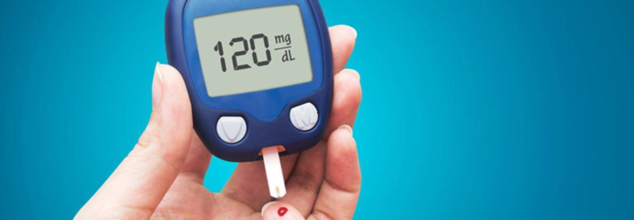- Health Conditions A-Z
- Health & Wellness
- Nutrition
- Fitness
- Health News
- Ayurveda
- Videos
- Medicine A-Z
- Parenting
- Web Stories
Easy Ways To Control Your Blood Sugar And Morning Cravings

Credits: Canva
Managing your blood sugar in the morning sets the tone for how you’ll feel for the rest of the day. A balanced breakfast doesn’t just keep energy levels steady—it can reduce insulin resistance, support long-term metabolic health, and curb cravings for sugary or processed snacks. Choosing the right foods at the start of your day is a powerful step toward keeping your blood sugar levels in check.
What to Avoid First Thing in the Morning
Many popular breakfast items can do more harm than good. Sugary cereals, white bread, and fruit juices might provide a quick burst of energy but are often followed by sudden crashes in blood sugar. These fluctuations can leave you feeling sluggish, irritable, and even hungrier than before. Avoiding these options helps prevent mid-morning energy dips and unnecessary snacking.
What to Include in Your Morning Routine
Here are ten simple additions to your morning routine that can support balanced blood sugar levels and promote overall wellness:
Lukewarm Water with Lemon
Starting the day with a glass of lukewarm water—optionally with a few drops of lemon—can gently stimulate digestion. This simple practice helps the body wake up gradually without triggering a spike in blood sugar.
Vegetable Smoothie
Blending vegetables like spinach, cucumber, and mint into a morning smoothie is a refreshing way to boost fiber intake. Unlike fruit-heavy smoothies, this option keeps sugar content low while still offering essential nutrients.
Eggs
A rich source of protein and healthy fats, eggs can help maintain steady blood sugar levels. Scrambled, boiled, or poached, they’re versatile and satisfying. Pair them with vegetables or whole grains rather than white bread or sugary condiments.
Berries
Blueberries, strawberries, and raspberries are low on the glycemic index and high in fiber and antioxidants. They’re an excellent topping for oatmeal, yogurt, or smoothies—adding sweetness without the sugar crash.
Oats (Steel-Cut or Rolled)
Oats contain soluble fiber that slows digestion and glucose absorption. For added benefits, skip the sugar and top your oats with nuts, seeds, or berries.
Greek Yogurt
Greek yogurt is high in protein and contains probiotics that support gut health, which in turn plays a role in blood sugar balance. Opt for plain, unsweetened varieties and customize with cinnamon, chia seeds, or almonds.
Chia Seeds
Chia seeds are full of fiber and omega-3s. When soaked, they form a gel that slows the absorption of sugar into the bloodstream. Add them to puddings, smoothies, or oats for lasting energy.
Whole-Grain Bread or Wraps
Whole grains are a better alternative to white bread because they digest more slowly and help stabilize blood sugar. Enjoy them with protein-rich toppings like eggs or nut butter.
Avocados
Avocados offer healthy fats and fiber, which enhance insulin sensitivity. A simple avocado toast on whole-grain bread can be a filling and blood sugar-friendly choice.
Nuts and Nut Butters
Nuts are a great source of healthy fats and protein. A spoonful of almond, peanut, or cashew butter can be added to oatmeal, smoothies, or toast—just make sure it's free of added sugars and oils.
Seeds Are Superfoods-But Why Are Seed Oils 'Unhealthy'?

Credits: Canva
Seed oils have become one of the most controversial health topics in recent years. While the seeds themselves are revered as nutrient powerhouses—packed with fiber, protein, antioxidants, and essential fatty acids—the oils derived from them are often vilified. Health influencers on social media frequently label seed oils as “toxic,” blaming them for everything from chronic inflammation to metabolic dysfunction.
But is this fear rooted in science, or is it another nutrition myth inflated by online trends? Let’s break down what seed oils really are, where the controversy stems from, and whether they truly deserve their reputation.
What Are Seed Oils?
Seed oils, also commonly referred to as vegetable oils, are extracted from the seeds of various plants. These include:
- Canola
- Corn
- Sunflower
- Soybean
- Safflower
- Grapeseed
- Cottonseed
- Rice bran
- Peanut
These oils are widely used across global cuisines and are a staple in processed food manufacturing. From salad dressings and mayonnaise to baked goods and fast food, seed oils are virtually everywhere.
It’s important to note that whole seeds (like flaxseeds, chia seeds, pumpkin seeds, and sunflower seeds) are undeniably beneficial to health. They're rich in dietary fiber, plant protein, healthy fats, vitamins, and minerals. These nutrients support cardiovascular health, hormone balance, skin health, and even digestion.
However, the process of extracting oils—especially when done via high heat and chemical solvents—can change the nutritional quality of these seeds significantly. This is where the controversy begins.
One of the central criticisms of seed oils is that they are “highly processed.” In conventional oil production, seeds are exposed to high heat and treated with chemical solvents like hexane to extract the oil efficiently and improve shelf stability.
This process strips the oil of many of its natural antioxidants and nutrients. It may also lead to oxidation and the formation of potentially harmful compounds when oils are stored for long periods or reused for frying.
However, not all seed oils are created equally. Cold-pressed seed oils, extracted mechanically without high heat or chemicals, tend to retain more nutrients and natural flavor. They’re more expensive and have a shorter shelf life—but from a health perspective, they’re a better option.
Do Seed Oils Really Cause Inflammation?
A major concern surrounding seed oils is their high omega-6 fatty acid content, particularly linoleic acid. While omega-6 fatty acids are essential to the human body, some argue that excess intake may lead to the production of pro-inflammatory compounds like arachidonic acid.
But this theory isn’t fully supported by scientific evidence. In fact, a 2012 study in the American Journal of Clinical Nutrition found that high intakes of linoleic acid did not increase inflammatory markers in the body. Similarly, a review in Nutrition & Metabolism revealed that reducing linoleic acid intake didn’t lower levels of arachidonic acid.
So, why the persistent claim that seed oils trigger inflammation? Experts suggest that it's not the seed oils themselves but the foods they're commonly found in—fried foods, fast food, packaged snacks—that are the real culprits. These ultra-processed foods often contain added sugars, preservatives, refined carbs, and trans fats, all of which are known to promote inflammation and chronic disease.
Are Seed Oils Safe to Eat?
Yes—when consumed in moderation and as part of a balanced diet, seed oils are not inherently harmful. In fact, research indicates that replacing saturated fats (like butter and lard) with polyunsaturated fats found in seed oils can reduce the risk of cardiovascular disease and type 2 diabetes. A 2018 meta-analysis in the Journal of Lipid Research supports this claim.
However, health experts do caution against excessive intake of ultraprocessed foods, which often contain seed oils in less desirable forms. According to the Cleveland Clinic, overconsumption of these products—not seed oils in isolation—is associated with inflammation, obesity, and chronic disease.
How To Choose the Right Oils?
Nutritionists and dietitians agree that diversity and moderation are key when it comes to fat sources. There’s no need to eliminate seed oils entirely—but it's wise to use a variety of oils, each offering unique nutrient profiles, for example:
Canola oil is great for baking due to its neutral flavor and high smoke point.
Olive oil is rich in heart-protective monounsaturated fats and ideal for dressings and roasting.
Sesame oil adds flavor and is perfect for stir-frying.
Avocado oil provides vitamin E and has one of the highest smoke points.
If budget allows, opt for cold-pressed oils whenever possible. These oils retain more antioxidants and are free of chemical solvents used in conventional extraction methods. A 2023 review in Food Research International concluded that cold-pressed oils have better nutrient retention and antioxidant capacity.
Healthier Alternatives to Seed Oils
If you're looking to minimize or replace seed oils in your diet, there are plenty of healthful options, especially those rich in monounsaturated and omega-3 fatty acids.
Better alternatives include:
Extra virgin olive oil: Anti-inflammatory, heart-healthy
Avocado oil: Nutrient-rich with high heat stability
Flaxseed oil: High in omega-3s (best for cold use)
Chia seed oil: Great for skin and cellular health
Walnut oil: Nutty flavor and brain-supportive omega-3s
These oils offer diverse health benefits and support a well-rounded, anti-inflammatory diet.
Why Should You Avoid Seed Oils?
Seed oils are not the villains they’re made out to be. The real issue lies in context: the quality of the oil, how it’s processed, and what kinds of foods it's used in. If your diet consists mostly of whole, minimally processed foods, there’s no reason to fear seed oils.
The best course of action? Focus less on demonizing one type of fat and more on eating a variety of healthy, balanced meals. Moderation, diversity, and quality should always guide your dietary choices—not viral myths or fear-driven trends.
This High-Protein Meal Is The Best Weight-Loss Addition To Your Diet

(Credit-Canva)
If you're looking for an effective way to support your weight loss journey, focusing on high-protein meals can make a significant difference. One particular dish stands out as a versatile and delicious option to incorporate into your diet: the ‘High-Protein Grilled Chicken Salad’. This meal isn't just tasty; it's packed with benefits that can help you feel fuller, maintain muscle, and make your weight management goals more achievable.
Chicken salad is a flexible dish featuring chopped or shredded chicken, typically bound with ingredients like mayonnaise, sour cream, yogurt, or a vinegar-based dressing. Many find it delicious, but its use of higher-calorie ingredients can lead to questions about its healthfulness.
Chicken salad can absolutely be a healthy choice. Its nutritional value ultimately depends on the specific ingredients used, the portion size consumed, and what other foods it's served with to create a complete meal.
Understanding Chicken Salad
When people think of chicken salad, they often picture the classic creamy American version, which originated in the mid-1800s. This traditional style commonly includes boiled eggs, celery, apples, grapes, and nuts like almonds or pecans, all mixed with cooked chicken and held together with mayonnaise.
But chicken salad can have many different tastes and ingredients. It's usually served cold and is made with cooked chicken, a dressing, and sometimes extra vegetables, nuts, seeds, or fruit for flavor and crunch.
For example, a Thai-style chicken salad might mix chopped chicken and cucumber with flavors like peanut, ginger, garlic, chili oil, and rice vinegar. A traditional Mexican chicken salad, called ensalada de pollo, uses sour cream and mayo to combine chicken with mixed vegetables like beans, corn, and potatoes.
You can find chicken salad at delis and restaurants, buy it ready-made at the grocery store, or easily make your own at home.
Chicken Salad's Nutrition Facts
Chicken salad is full of lean protein, plus vitamins and minerals, so it can certainly be part of a healthy meal and a healthy diet overall.
How healthy it is really comes down to the ingredients and how much you eat. Certain ingredients, like the type and amount of mayo used, can significantly increase the calories and unhealthy fats, making it less nutritious.
According to the United States Department of Agriculture even a small 1/2-cup serving (about 4 ounces) of chicken salad often has 400 calories or more. And even though "salad" is in its name, it's often served on bread or in a wrap, rather than on a bed of leafy greens.
Chicken salad generally has fewer carbs, fiber, and sugar, but more protein, calories, and fat. While the role of unhealthy fats is still debated, many experts agree that swapping them for healthier fats (like those in nuts and seeds) could lower your risk of heart problems.
These are just general numbers, as the actual nutrients change depending on how your chicken salad is made. Adding things like fruits, veggies, nuts, and seeds, or using a lower-calorie binder like yogurt, can easily change these values. In short, chicken salad is a good source of lean protein, and adding fruits, vegetables, nuts, and seeds gives you more healthy vitamins and minerals. However, it often contains a fair amount of calories.
Like Certain Food Intolerance, Can Weight-Loss Drugs Help Drink Less Alcohol?

The medical world is abuzz with a tantalizing question- Can the same medications that are transforming weight loss also suppress alcohol consumption? GLP-1 receptor agonists Ozempic (semaglutide) and Wegovy, already lauded for their success in treating diabetes and obesity, might have another desirable off-label effect — easing alcohol cravings. As anecdotal evidence builds steam and scientific research gradually accumulates, this hypothesized off-label effect is now attracting serious research scrutiny.
In the midst of the COVID-19 pandemic, many people were hit with a tide of health issues — high blood pressure, prediabetes, and a heart arrhythmia. Millions reached for Ozempic, a GLP-1 medication indicated for diabetes and increasingly used to shed pounds but a surprising side effect also took place- experiencing a reduced craving for alcohol.
These instances aren't unique. While prescriptions for semaglutide-based drugs skyrocket — and even though they have a high, monthly cost of about $1,000 and limited insurance coverage — both patients and doctors are seeing a remarkable side effect- a reduced desire to drink, smoke, or even be consumed by compulsive behaviors such as gambling and over-the-internet shopping.
What's The Link Between GLP-1 Drugs And Dopamine?
In order to comprehend how GLP-1 receptor agonists might impact alcohol intake, we must look at their effects on the brain — i.e., the dopamine reward system.
Medications such as Ozempic mimic glucagon-like peptide-1, a hormone that not only controls blood sugar and induces satiety but also seems to influence the brain's reward system. Studies in both animals and humans have shown that GLP-1 medications lower the brain's release of dopamine to alcohol — basically blunting the enjoyment associated with drinking.
In a 2023 eBioMedicine study, scientists discovered semaglutide prevented alcohol-induced surges of dopamine in rat brains. This neurologic suppression manifested in significantly fewer calories from alcohol being consumed by the animals.
Human trials, though early in routine development, are now starting to resonate with animal research. One such notable example is a randomized controlled trial presented in JAMA Psychiatry. Researchers gave weekly injections of semaglutide to 48 adults with alcohol use disorder (AUD) — people not actively receiving treatment — and measured against a placebo group.
Nine weeks later, participants receiving semaglutide:
- Reported decreased alcohol cravings
- Consumed less on the days they drank
- Spent fewer heavy drinking days (4+ for women, 5+ for men)
- Close to 40% had no heavy drinking days in the last month of the study
These results are consistent with anecdotal reports and are indicative of the potential of semaglutide to restrict harmful drinking habits, even in non-abstainers.
Can it Be Used for Treating Alcohol Abuse Disorder?
While researchers are cautious about drawing broad conclusions, the early data suggests a promising new treatment pathway for AUD. Dr. Elisabet Jerlhag at the University of Gothenburg has spent over a decade studying GLP-1 drugs and alcohol behavior in animals. Her work shows consistent results — lower alcohol intake when GLP-1 receptors are stimulated.
This leaves the door ajar to the possibility of GLP-1 drugs being repurposed or adapted to treat substance use disorders. Some existing clinical trials now aim to investigate this juncture further, such as on nicotine, opioids, and behavioral addictions.
Despite the encouraging data, medical experts emphasize that we’re still in the very early days of understanding the full implications. According to addiction specialist Dr. Jennifer Haass-Koffler, larger and longer-term studies are needed before prescribing GLP-1 drugs specifically for AUD.
Another warning is the overlap between health threats. For example, semaglutide has been linked with pancreatitis, and people with alcohol use disorder are already at increased risk for it. So, personalized medical supervision is essential prior to repurposing these drugs for alcohol reduction.
Why Alcohol Use Is Increasing?
Alcohol illnesses are a major worldwide health issue, causing more than 2.6 million deaths per year through their associations with cancer, cardiovascular disease, and cirrhosis of the liver. The neurobiology of alcohol dependence explains how habitual drinking reprograms the brain — moving drinking from deliberate decision to involuntary habit.
In this context, drugs that interrupt such neurological patterns are a huge hope. If semaglutide and other GLP-1 medications are proven to reduce consumption safely and reliably, they may become valuable weapons in the battle against alcohol-related illness around the globe.
While it's premature to suggest prescribing Ozempic or Wegovy for alcohol use disorder on a mass level, the accumulating evidence is persuasive. From diminishing dopamine spikes in laboratory animals to reduced beverage consumption in clinical trials, GLP-1 medications could reimagine the approach to addiction treatment.
For the time being, they are an intriguing, added advantage for patients who use them to lose weight or control diabetes — and a burning issue for scientists and public health researchers ready to address one of the globe's most intractable health issues.
© 2024 Bennett, Coleman & Company Limited

